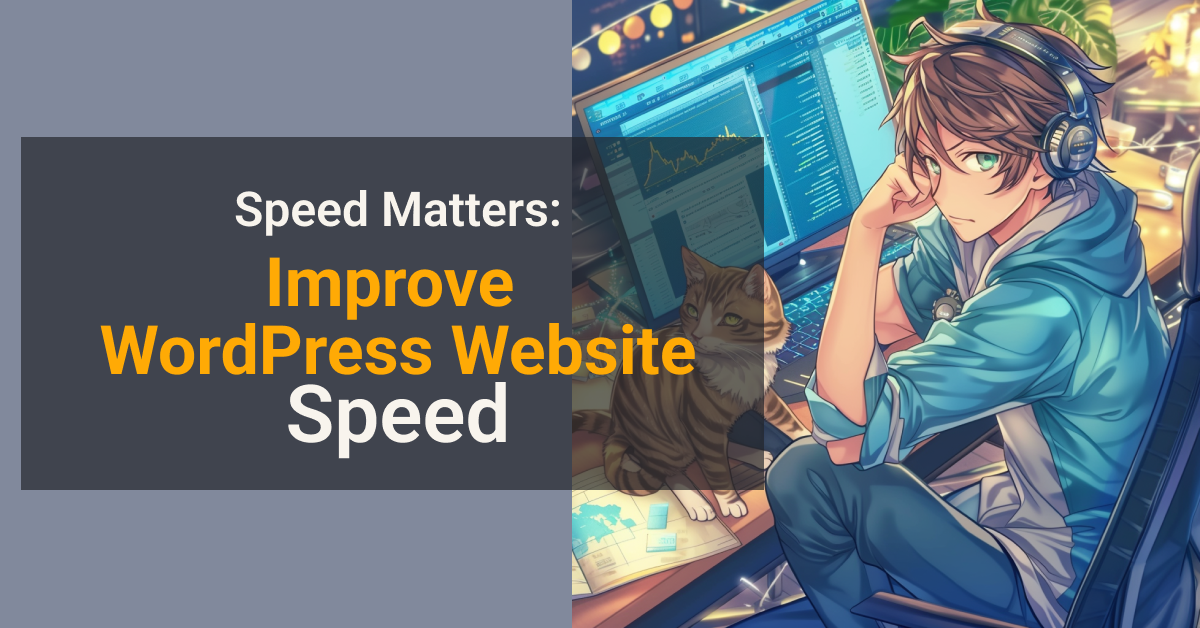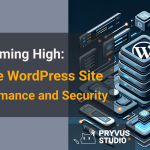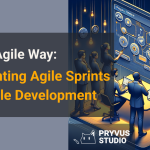
Introduction
Looking to supercharge your WordPress site? Improving its speed is key!
Speed isn’t just a luxury; it’s a necessity for ensuring your WordPress site ranks well on search engines and provides a seamless user experience. A slow site can drive visitors away, harm your SEO rankings, and even affect your conversion rates.
In this article, you will learn:
- Why website speed is crucial for your WordPress site
- The top plugins to optimize your site’s speed
- Advanced techniques for taking your site’s performance to the next level
Understanding the Importance of Website Speed in WordPress
Let’s face it, in the digital age, speed is king. Whether you’re updating your blog, managing an e-commerce platform, or just providing information, how quickly your WordPress site loads can make or break the user experience. A snail-paced website not only tests your visitors’ patience but can also ding your SEO rankings, pushing your site further down search engine results pages. But why is WordPress website speed such a big deal?

“A faster WordPress site can significantly improve user experience and SEO rankings.”
First off, speed influences how users perceive your brand. A swift, seamless site suggests professionalism and reliability, whereas a sluggish one can lead to frustration and a higher bounce rate. Moreover, Google has explicitly stated that site speed is a ranking factor for both desktop and mobile searches. This means that optimizing your WordPress site for speed isn’t just about user satisfaction—it’s also about visibility in search results.
Another critical aspect of website speed is its impact on conversion rates. Studies have shown that even a one-second delay in page response can result in a 7% reduction in conversions. For online stores, this can translate to significant revenue losses. Additionally, faster sites tend to engage users for longer, increasing the chances of converting visits into actions, whether it’s making a purchase, signing up for a newsletter, or filling out a contact form.
Lastly, in our mobile-first world, optimizing for speed is paramount. With more people accessing the internet via smartphones, ensuring your WordPress site is quick to load on mobile devices is crucial. Mobile users expect quick access to information and services, and if your site can’t deliver, they’re likely to move on to one that can.
In conclusion, improving your WordPress website’s speed is not just a technical necessity; it’s a critical component of your online strategy. It affects everything from user experience to SEO, conversion rates, and mobile accessibility. By recognizing the importance of website speed, you’re taking the first step towards creating a faster, more efficient, and ultimately more successful WordPress site.
Top Speed Optimization Plugins for WordPress
When it comes to WordPress, one of the quickest wins in the race to speed up your website involves leveraging the right plugins. The beauty of WordPress lies in its extensibility, and speed optimization plugins are a testament to this. These tools can help you compress images, minify CSS and JavaScript, cache your site, and much more, all contributing to faster load times. But with thousands of plugins out there, which ones should you be focusing on?

“Selecting the right speed optimization plugins is crucial for enhancing your WordPress site’s performance.”
First on the list is W3 Total Cache. This plugin is a powerhouse when it comes to improving website performance. By caching every aspect of your site, it reduces the download times and provides transparent content delivery network (CDN) integration, making your website lightning-fast.
Another game-changer is WP Rocket. Unlike other caching plugins, WP Rocket starts working right out of the box without the need for complex configuration, making it user-friendly for beginners. It not only caches your website but also optimizes your databases, reduces the size of your HTML, CSS, and JavaScript files through minification, and defers the loading of JavaScript.
For image-heavy sites, Smush is a godsend. It compresses and optimizes your images without sacrificing quality, which can significantly reduce your page load times. Plus, it’s easy to use, with automated optimization for new images you upload.
Autoptimize is another must-have, focusing on optimizing your site’s CSS, JavaScript, and even HTML. It can aggregate, minify, and cache scripts and styles, inject CSS in the page head by default, and defer the aggregated full scripts to the footer to improve page load time.
Lastly, Cloudflare’s free plan offers not just a CDN to speed up your website but also provides security features to help protect your site from attacks. While not a plugin in the traditional sense, it integrates seamlessly with WordPress and is a critical component of any speed optimization strategy.
Choosing the right plugins can drastically improve your WordPress site’s speed, but remember, it’s not just about installing them. Configuration and regular updates are key to ensuring they continue to perform effectively, helping your site stay as fast as possible.
Practical Tips for Enhancing WordPress Website Speed
Optimizing your WordPress website for speed involves more than just installing the right plugins. It’s about adopting a holistic approach to web performance. Whether you’re a seasoned developer or a WordPress newbie, there are practical steps you can take to ensure your site is as fast as it can be. Let’s dive into some actionable tips that can make a real difference in your site’s loading times.

“Implementing practical speed enhancement techniques can significantly boost your WordPress site’s performance.”
Firstly, choosing a quality hosting provider is paramount. Your hosting environment has a direct impact on your website’s speed. Opt for a WordPress-specific hosting solution that offers server-level caching, fast server response times, and resources dedicated to scaling your website efficiently.
Next up, keep your WordPress theme and plugins up to date. Not only does this ensure your site is secure, but updates often include optimizations that improve speed. Choose lightweight themes designed for speed, and be judicious about the plugins you install – every plugin adds overhead, so only use those that are essential for your site’s functionality.
Optimizing images is another crucial step. Large, unoptimized images can drastically slow down your website. Use tools or plugins like Smush to compress your images without losing quality. Additionally, implementing lazy loading ensures images are only loaded when they’re about to enter the viewport, which can significantly reduce initial page load times.
Minify and combine CSS and JavaScript files. This reduces the number and size of requests that browsers need to make to render your site, speeding up loading times. Many plugins and tools can help with this, but ensure you test your site after making these changes to avoid any potential issues.
Finally, use a Content Delivery Network (CDN). CDNs distribute your content across multiple servers worldwide, ensuring that users are served from a location close to them. This not only speeds up the delivery of your site’s content but also helps manage spikes in traffic more effectively.
By taking these practical steps, you can significantly enhance your WordPress website’s speed, improving user experience, SEO rankings, and potentially your site’s conversion rates. Remember, website optimization is an ongoing process, so regularly monitor your site’s performance and adjust your strategies as needed.
Advanced Techniques for Speed Optimization in WordPress
For those looking to take their WordPress site speed to the next level, diving into advanced optimization techniques can uncover new opportunities for improvement. These strategies go beyond basic plugins and settings, tapping into the deeper layers of your website’s infrastructure and code. Let’s explore some of the more sophisticated methods to supercharge your WordPress site.

“Advanced speed optimization techniques can unlock unprecedented performance gains for your WordPress site.”
First on the list is leveraging browser caching. This involves configuring your web server to instruct browsers to store certain types of files locally for a specified period. By modifying your .htaccess file (for Apache servers) or using plugins that handle this for you, you can significantly reduce load times for repeat visitors.
Another powerful technique is database optimization. Over time, your WordPress database can become cluttered with unnecessary data, such as post revisions, unused tags, and orphaned metadata. Regularly cleaning your database can streamline its performance, making your website faster. Plugins like WP-Optimize can automate this process, but manual checks are also beneficial.
Implementing Object Caching is a game-changer for dynamic websites with heavy database interactions. Object caching stores database query results so that the next time a piece of data is needed, it can be fetched from the cache rather than the database. This can dramatically reduce the load on your server and speed up your site, especially for complex sites with a lot of dynamic content.
For those comfortable with coding, minifying and combining files manually offers more control over the process compared to using plugins. By carefully selecting which files to combine and minify, you can avoid potential conflicts while optimizing your site’s load time.
Lastly, consider using a DNS-level website firewall like Cloudflare. This not only protects your site from security threats but can also improve load times by blocking malicious traffic before it even reaches your server.
Adopting these advanced techniques requires a deeper understanding of WordPress and web technologies, but the rewards in terms of site speed and user experience can be substantial. Always ensure to backup your site before making significant changes and test thoroughly to ensure everything runs smoothly.
Measuring and Monitoring Your WordPress Site’s Performance
After putting in the work to optimize your WordPress website’s speed, how do you know if your efforts have paid off? The answer lies in regular measuring and monitoring of your site’s performance. By utilizing the right tools and knowing what metrics to look for, you can get a clear picture of where your site stands and where there might be room for improvement.

“Regular performance measurement is key to maintaining and improving your WordPress site’s speed.”
Google PageSpeed Insights is a fantastic starting point. This free tool not only assesses your website’s performance on both desktop and mobile devices but also provides actionable recommendations for further improvements. It measures critical aspects like First Contentful Paint (FCP) and Time to Interactive (TTI), giving you insights into how users experience your site.
Another invaluable tool is GTmetrix. It offers a comprehensive analysis, combining Google’s Lighthouse scores with its own metrics, such as Fully Loaded Time and Total Page Size. GTmetrix also records your site’s performance over time, allowing you to track how changes affect speed.
For those looking for real-time monitoring, New Relic offers an in-depth view of your website’s backend performance. It helps identify slow database queries, external services slowing down your site, and much more, making it ideal for troubleshooting specific issues that impact site speed.
Don’t forget the importance of monitoring your hosting environment’s performance. Web hosting providers often offer their own set of tools for this purpose, enabling you to spot and address server-level issues that could be affecting your website’s speed.
Finally, regularly checking your website’s speed after updates to WordPress, themes, or plugins is crucial. Updates can have unintended effects on your site’s performance, so staying proactive can help you maintain optimal speed.
By measuring and monitoring your WordPress site’s performance regularly, you can ensure that it remains fast, efficient, and capable of providing an excellent user experience. Remember, optimization is an ongoing process, and what works today may need adjustment tomorrow. Stay vigilant, stay informed, and keep your WordPress site speeding along.


